Children of professors often become professors themselves, how to explain this? Well, It’s simple science, as Edinburgh scholars around Ian Deary and Stuart Ritchie established in peer-reviewed research: Academic achievement and even financial income are both genetically inheritable, being directly connected to the IQ which is of course genetically inheritable, best scientific proof being a) English political elites and nobility are all supremely intelligent, and b) kids from low-income families, especially those of immigrants, especially those with dark skin, rarely make it into Oxbridge. Both for good scientific reasons.
In this regard, it is pretty straightforward why surprisingly many professors have a professor Dad, and sometimes also a professor Mum. Sometimes at the same university where their genetically superior and IQ-endowed progeny happens to have studied, or even to take up their own faculty chair. Sometimes it is simply enough to say your last name and admit, yes, so-and-so is indeed my dad, mum or uncle, and all academic doors open as if by magic.
My readers might recall two such examples. The MIT molecular biologist David Sabatini long overshadowed his academic father David Sabatini Senior, in fact the junior is so big and influential that he probably will never have to retract a paper, no matter what. A very different case is that of the US-based Greek materials scientists Katerina Aifantis and her father Elias Aifantis, which is so twisted that even a team of hardened psychiatrists will probably quit ripping their hair out.
The following case is that of the Nussenzweig family, where for at least one of the sons, the Rockefeller University professor of immunology, HIV researcher, AAAS and NAS member Michel Nussenzweig, an “alternative career” might have a better option. There are things on PubPeer which suggest it at least. Some of these papers were published with his brother Andre Nussenzweig, cancer researcher at the National Cancer Institute (NCI) at NIH in Bethesda.
Their parents were Ruth and Victor Nussenzweig (both now deceased), very eminent immunologists from Brazil who in 1963 fled the fascist dictatorship and established themselves at the New York University (Ruth Nussenzweig in 1939 fled the Nazis in Austria). Their son Michel studied, graduated and built his entire academic career at the neighbouring Rockefeller University, where his faculty chair is named by his two famous PhD mentors, Zanvil Cohn and Ralph Steinman. Now Michel Nussenzweig works on curing COVID-19, in a recent Nature paper, by studying virus-neutralising antibodies.
Indeed, Nussenzweig’s approach to immunoglobulin recombination has so far proved a resounding success, with papers hammered into Nature, Cell and Science. If it worked there, it sure will also get the coronavirus beaten down like a recalcitrant peer reviewer.
Let us start with a paper from Michel’s lab, coauthored with his brother and DNA repair expert, Andre Nussenzweig.
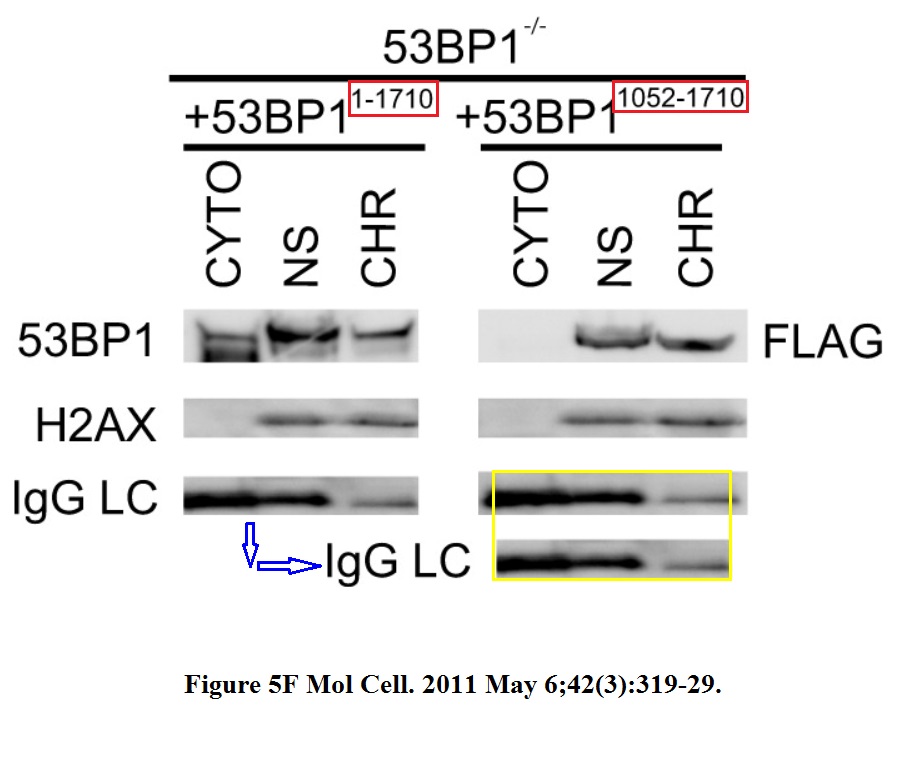
Anne Bothmer, Davide F. Robbiani, Michela Di Virgilio, Samuel F. Bunting, Isaac A. Klein, Niklas Feldhahn, Jacqueline Barlow, Hua-Tang Chen, David Bosque, Elsa Callen, André Nussenzweig, Michel C. Nussenzweig Regulation of DNA end joining, resection, and immunoglobulin class switch recombination by 53BP1 Molecular Cell (2011) doi: 10.1016/j.molcel.2011.03.019
That seems like a reused gel and stands in for two different experiments, where two different protein constructs were used. Maybe a mistake, where someone also mistakenly cropped the bands while mistakenly copy-pasting them.
More accidents from Michel’s Rockefeller lab, again with his brother as coauthor, where one of coauthors of the above paper returns as first author here:
Niklas Feldhahn, Elisabetta Ferretti, Davide F Robbiani, Elsa Callen, Stephanie Deroubaix, Licia Selleri, Andre Nussenzweig, Michel C Nussenzweig The hSSB1 orthologue Obfc2b is essential for skeletogenesis but dispensable for the DNA damage response in vivo The EMBO journal (2012) doi: 10.1038/emboj.2012.247
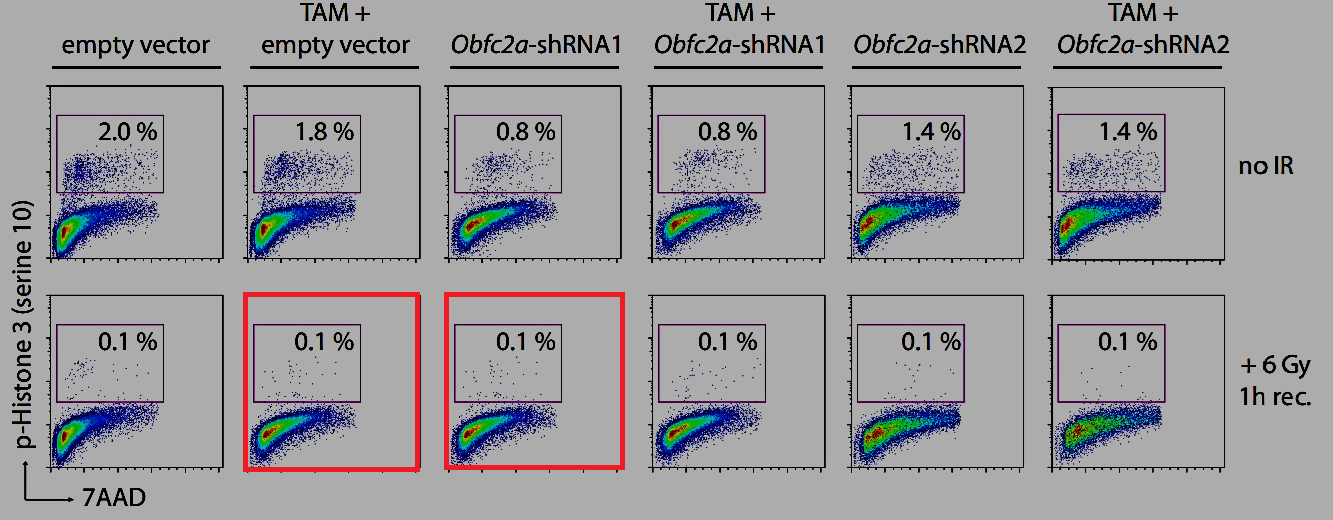

Another coauthor, the UCSF professor Licia Selleri, explained on PubPeer which figures exactly her lab contributed (not these). She added:
“we had no part in the flow cytometry analyses. We are sure that Dr. Feldhahn and Dr. Nussenzweig will respond and will address your concerns.“
Niklas Feldhahn is now lecturer at the Imperial College London. In 2006 his PhD paper from the University of Cologne, Germany (Feldhahn et al JEM 2002) was retracted due to “incorrect FACS instrument compensations“, another Feldhahn coauthored paper, Klein et al JEM 2004, so far escaped any literature corrections. Neither Feldhahn nor any of the Nussenzweigs found time to respond as of yet. This Nature paper of the Nussenzweigs might be even more problematic:
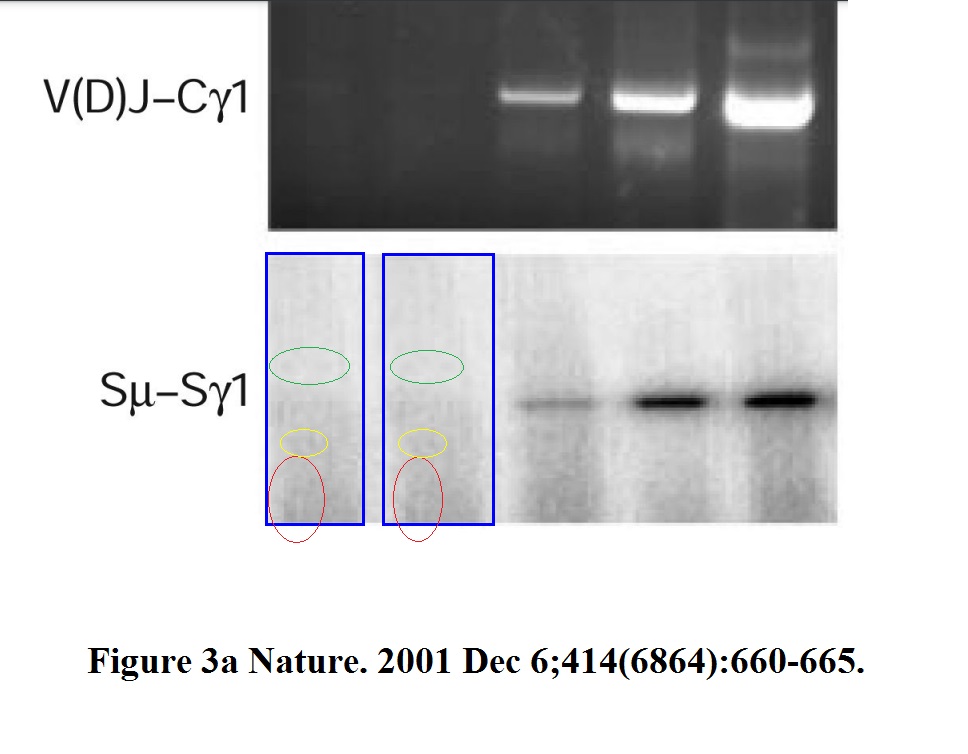
Simone Petersen, Rafael Casellas, Bernardo Reina-San-Martin, Hua Tang Chen, Michael J. Difilippantonio, Patrick C. Wilson, Leif Hanitsch, Arkady Celeste, Masamichi Muramatsu, Duane R. Pilch, Christophe Redon, Thomas Ried, William M. Bonner, Tasuku Honjo, Michel C. Nussenzweig, André Nussenzweig AID is required to initiate Nbs1/gamma-H2AX focus formation and mutations at sites of class switching Nature (2001) doi: 10.1038/414660a
It is rather clear that the two labelled lanes are identical. Can this happen by accident or by mistake? Depends how you define accident or mistake, maybe like getting caught on data falsification? This time, it is Andre Nussenzweig who is the last and corresponding author here. But neither of the brothers replied on PubPeer so far, despite being primarily responsible senior authors. There might be a pattern, observe that the second author of that 2001 Nature paper is first author in 2002 Cell:
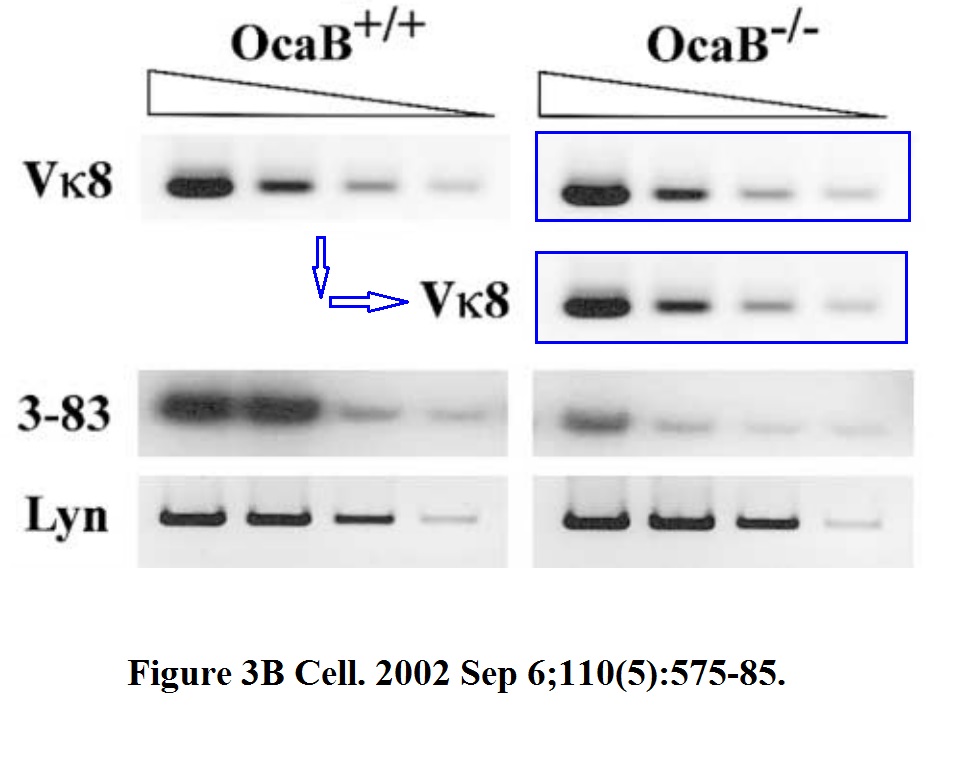
Rafael Casellas, Mila Jankovic, Gesa Meyer, Anna Gazumyan, Yan Luo, Robert Roeder, Michel Nussenzweig OcaB is required for normal transcription and V(D)J recombination of a subset of immunoglobulin kappa genes Cell (2002) doi: 10.1016/s0092-8674(02)00911-x
This lead author Rafael Caselas is now principal investigator at National Cancer Institute (NCI) at NIH in Bethesda, where Andre Nussenzweig works. Caselas published also this with his mentor Michel Nussenzweig:
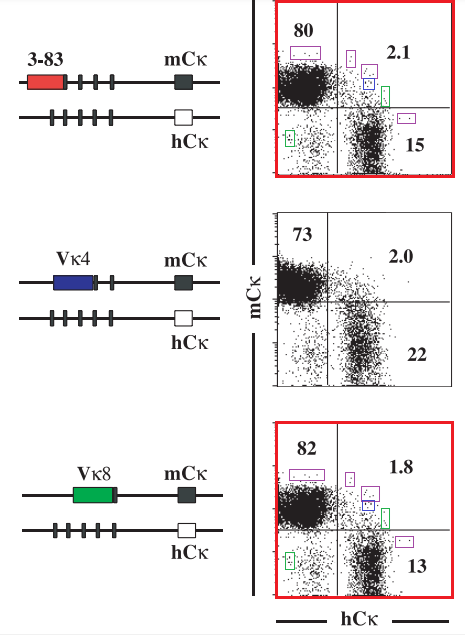
R Casellas, T A Shih , M Kleinewietfeld, J Rakonjac, D Nemazee, K Rajewsky, M C Nussenzweig Contribution of receptor editing to the antibody repertoire Science (2001) doi: 10.1126/science.1056600
This is what Elisabeth Bik calls Flawed Cytometry. The two red-boxed FACS plots are both different and strangely similar, as the highlighted cell populations suggests. As if someone was replotting a datafile of one flow cytometry sample in two slightly different ways, to stand in for two different experiments with differently recombined antibodies. But read on, there might be a funnier explanation!
This prank was not a nice thing to happen to this paper, in Science no less, and with such a collaborator. The German scientist Klaus Rajewsky, born 1936, is a legendary titan of genetics and immunology, his name opens all academic doors and journal gates. As aside, his son Nikolaus Rajewsky also made rather well in genetics, as academic dynasties work, it’s all genetic IQ inheritance, you know. Father and son Rajewsky corrected in 2017 their joint Cell paper Xiao et al 2007, for “duplication of the FACS plot“. The situation seems somewhat similar to that of the Caselas et al 2001 paper, because the Rajewskys explained in the correction:
“The small differences of the percentages in two of the panels on the right are due to an updated FlowJo software.“
I hope the Rajewskys sued those naughty FlowJo software makers or at least deleted that evil update. In any case, it is definitely not pleasant to find evidence of data rigging in Klaus Rajewski’s papers, especially since there was already the afore-mentioned 2006 retraction with Feldhahn from Cologne, who by then already went to USA to work with Michel Nussenzweig.
No Feldhahn or Caselas in the next joint paper by Michel Nussenzweig and Klaus Rajewski though:
Yair Dorsett, Kevin M. McBride, Mila Jankovic, Anna Gazumyan, To-Ha Thai, Davide F. Robbiani, Michela Di Virgilio, Bernardo Reina San-Martin, Gordon Heidkamp, Tanja A. Schwickert, Thomas Eisenreich, Klaus Rajewsky, Michel C. Nussenzweig MicroRNA-155 suppresses activation-induced cytidine deaminase-mediated Myc-Igh translocation Immunity (2008) doi: 10.1016/j.immuni.2008.04.002
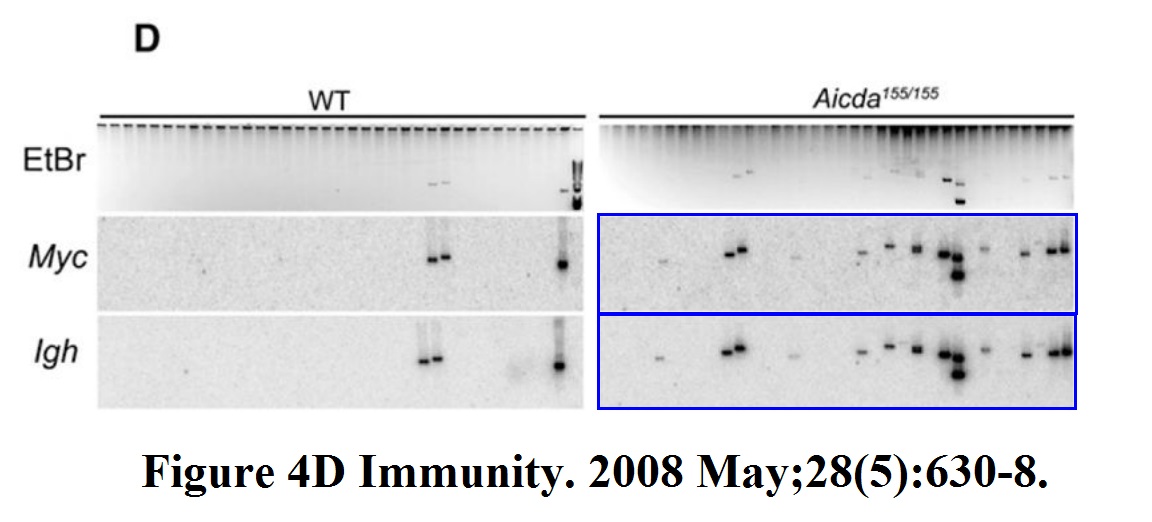
The bad news is that the pictures differ in brightness/contrast while showing the exactly same gel scan, every single spot of the background matches. Why would someone adjust brightness when accidentally copy-pasting an image? The good news is that the society-published Journal of Immunology is a bit of a fraud factory which lets things much worse than that slide, for much less important people.

But let us briefly return to the evil flow cytometry software which fabricates different numbers for identical FACS plots. Because this is what must have happened here:
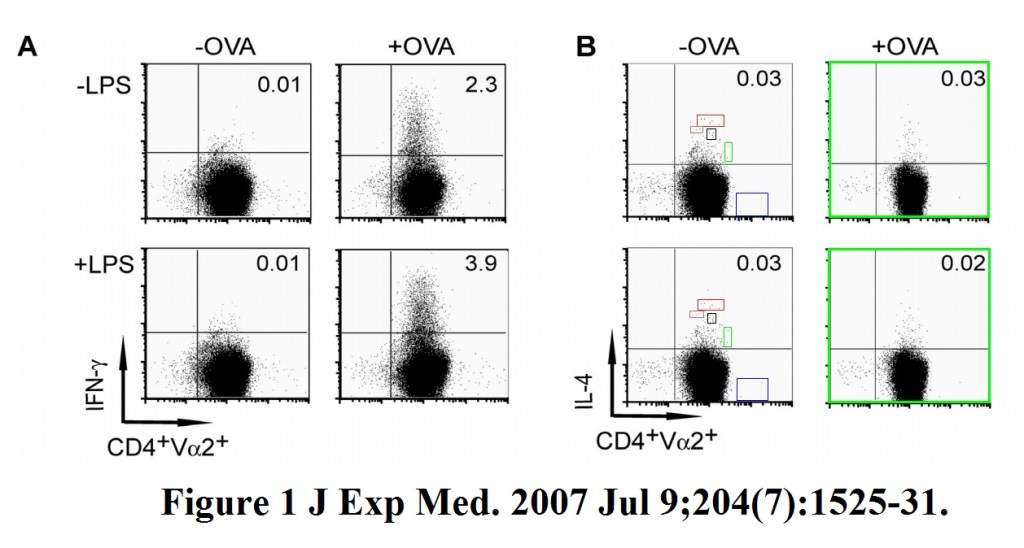
Dimitris Skokos, Michel C. Nussenzweig CD8- DCs induce IL-12-independent Th1 differentiation through Delta 4 Notch-like ligand in response to bacterial LPS The Journal of experimental medicine (2007) doi: 10.1084/jem.20062305
The first author Dimitris Skokos made it big in the pharma industry, and is adjunct professor at Rockefeller University. He trained there under same mentor as Michel Nussenzweig, apparently the Nobelist Ralph Steinman taught them, quote:
“Do everything to realize your first scientific observation. Never listen to people without imagination. Just do your best”
Some of Steinman’s mentees apparently took his advice too literally.
The next case is just an identically duplicated image, which on itself means little. But it seems, things like that or worse seem to recurrently happen by accident in the Michel Nussenzweig lab at Rockefeller.
Sergey Yurasov , Hedda Wardemann, Johanna Hammersen, Makoto Tsuiji, Eric Meffre, Virginia Pascual, Michel C. Nussenzweig Defective B cell tolerance checkpoints in systemic lupus erythematosus The Journal of Experimental Medicine (2005) doi: 10.1084/jem.20042251

But now, a paper without Michel, but with Andre Nussenzweig. Who for some reason decided against correcting the literature here:
Longyue L Cao, Xioaling Xu, Samuel F. Bunting, Jie Liu, Rui-Hong Wang, Longyue L. Cao, J. Julie Wu, Tie-Nan Peng, Junjie Chen, Andre Nussenzweig, Chu-Xia Deng, Toren Finkel A selective requirement for 53BP1 in the biological response to genomic instability induced by Brca1 deficiency Molecular Cell (2009) doi: 10.1016/j.molcel.2009.06.037
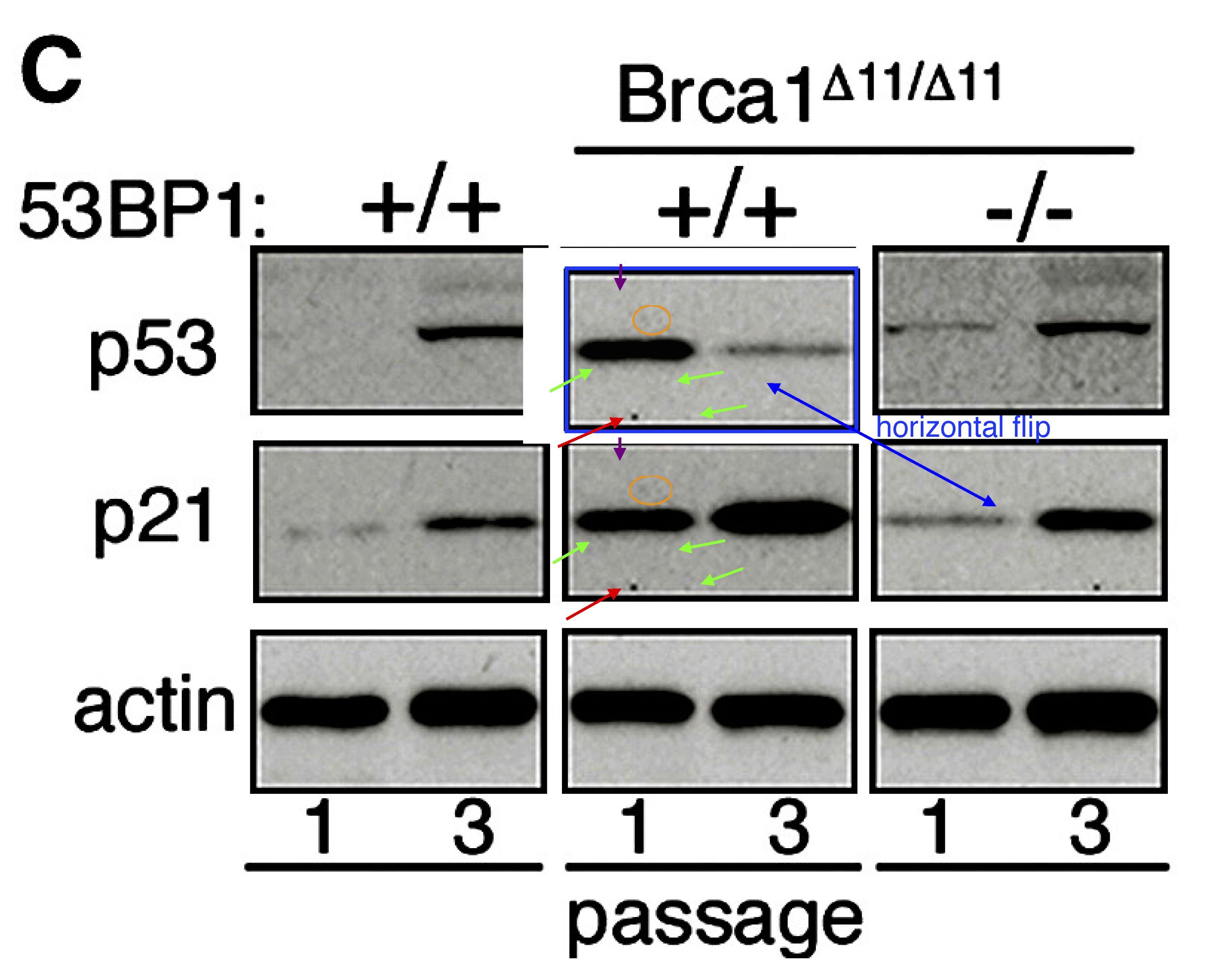

For some reason, all three highlighted western blot fragments show identical background. The two blue framed ones are horizontal mirror-flip copies of each other, but the third fragment shows one gel band which is same (left-hand-side) and one gel band which is totally different (right-hand-side). With green arrows pointing to certain irregularities which suggest erasure or other digital retouching. But of course also here, there are other, less pedestrian explanations.
The Molecular Cell editors are quoted on PubPeer from over 2 years ago with “It was investigated and handled according to our Process for Post Publication Issues“. No action whatsoever was taken on this paper till today. The last author, Toren Finkel of University of Pittsburgh, has several papers on Pubpeer, one such publication from his lab (Narayan et al Nature 2012) was retracted, officially for being irreproducible.
Was it really necessary for the Nussenzweig brothers to become scientists like their parents, with such attitude to data integrity? Why yes, of course, this is exactly how biomedicine progresses from one Nature paper to another NIH grant. And this is how Michel Nussenzweig will cure COVID-19, with Nature papers.

Donate!
If you are interested to support my work, you can leave here a small tip of $5. Or several of small tips, just increase the amount as you like (2x=€10; 5x=€25). Your generous patronage of my journalism will be most appreciated!
€5.00
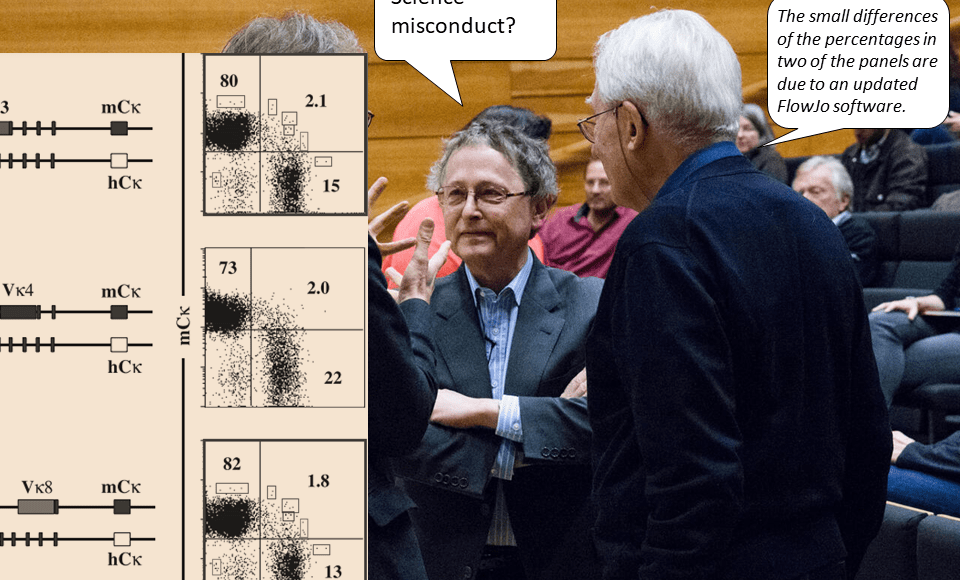

They are all family and friends, politicians and members or ex-members of governments, funding agencies, peer-reviewed journals and renowned scientists and they all divide the cake.
LikeLiked by 1 person
The key element in getting a good job in science research is to work for, and know other well known people in your field that have influence to open up jobs for you. Once you have that, all you need to do is get data that fits your narrative. If the data doesnt fit the narrative, just change the data until it fits, and the doors of opportunity open. You really have to be a pretty stupid person not to recognize this, and a very lazy person not to do these things, and become a failed scientist! You certainly can’t say that for anybody who worked for our favorites, David Sabitini and Carlo Croce.These people that worked for these two are not stupid and lazy, and therefore are successful scientists! Duh!
LikeLiked by 1 person
NMH: it depends of your concept of successful scientist. Is it a successful scientist the one who publishes a “snake lard” discovered in an high impact journal and gets applause like in a show biz or the one who sees their research work with actually and successful applications in the real life?
LikeLiked by 1 person
Well, I’m being sarcastic. My true definition of a successful scientist is someone who generates data that can be easily reproduced in other labs, in part due to a clear materials and methods section. That is the most important thing a scientist can do…I would think this is a low bar, but I have a lot of trouble reproducing much of what others due, in part because of a crappy M and M. But also maybe due to fraud.
All though they wont admit it, most tenured faculty seem themselves successful if they bring in a ton of grant money, so they follow the orders of administrators. Reproducible data here is always a plus, but not their definition of successful scientist.
LikeLiked by 1 person
J Exp Med. 2000 Dec 18;192(12):1833-40. doi: 10.1084/jem.192.12.1833.
Somatic mutation of the CD95 gene in human B cells as a side-effect of the germinal center reaction
M Müschen 1, D Re, B Jungnickel, V Diehl, K Rajewsky, R Küppers
Affiliation
1Institute for Genetics, Department of Immunology, University of Cologne, Köln, Germany.
PMID: 11120779 PMCID: PMC2213498 DOI: 10.1084/jem.192.12.1833
The diagram in figure 1 looks much like an ealier version. The figure legend 1 does not mention the previous publication.
LikeLiked by 1 person
More padding.
J Immunol Methods. 2012 Jan 31;375(1-2):176-81. doi: 10.1016/j.jim.2011.10.007. Epub 2011 Oct 18.
Translocation capture sequencing: a method for high throughput mapping of chromosomal rearrangements
Thiago Y Oliveira 1, Wolfgang Resch, Mila Jankovic, Rafael Casellas, Michel C Nussenzweig, Isaac A Klein
Affiliation
1Laboratory of Molecular Immunology, The Rockefeller University, New York, NY 10065, USA.
PMID: 22033343 PMCID: PMC3285106 DOI: 10.1016/j.jim.2011.10.007
Free PMC article
LikeLiked by 1 person
Am J Pathol
. 1999 Sep;155(3):915-25. doi: 10.1016/S0002-9440(10)65191-7.
Involvement of soluble CD95 in Churg-Strauss syndrome
M Müschen 1, U Warskulat, A Perniok, J Even, C Moers, B Kismet, N Temizkan, D Simon, M Schneider, D Häussinger
Affiliations expand
PMID: 10487849
7 comments on PubPeer (by: Peer 1, Unregistered Submission, Peer 3, Ochlerotatus Burgeri)
PMCID: PMC1866905 DOI: 10.1016/S0002-9440(10)65191-7
Much more similar than expected.
https://pubpeer.com/publications/FD5970503085A2D9CBCA5815A75F20
LikeLiked by 1 person
Markus Müschen, now at Yale, many 2-for-1s, same data in more than one paper, in his youth. It that a German tradition?
https://medicine.yale.edu/profile/markus-muschen/
https://pubpeer.com/search?q=Muschen
LikeLike
Using the same data in more than one publication does seem to be tradition the the German speaking world.
An example from Austria,
Markus Hengstschläger.
https://de.m.wikipedia.org/wiki/Markus_Hengstschl%C3%A4ger
https://pubpeer.com/search?q=Hengstschlager
LikeLike
J Immunol. 2004 Aug 15;173(4):2245-52. doi: 10.4049/jimmunol.173.4.2245.
TNF family member B cell-activating factor (BAFF) receptor-dependent and -independent roles for BAFF in B cell physiology
Yoshiteru Sasaki 1, Stefano Casola, Jeffery L Kutok, Klaus Rajewsky, Marc Schmidt-Supprian
Affiliations collapse
Affiliation
1CBR Institute for Biomedical Research, Harvard Medical School, Boston, MA 02115, USA. sasaki@cbr.med.harvard.edu
PMID: 15294936 DOI: 10.4049/jimmunol.173.4.2245
Figure 2B. Much more similar than expected.
LikeLiked by 1 person
Immunity. 2006 Jun;24(6):729-39. doi: 10.1016/j.immuni.2006.04.005.
Canonical NF-kappaB activity, dispensable for B cell development, replaces BAFF-receptor signals and promotes B cell proliferation upon activation
Yoshiteru Sasaki 1, Emmanuel Derudder, Elias Hobeika, Roberta Pelanda, Michael Reth, Klaus Rajewsky, Marc Schmidt-Supprian
Affiliations collapse
Affiliation
1The CBR Institute for Biomedical Research, Harvard Medical School, 200 Longwood Avenue, Boston, Massachusetts 02115, USA. sasaki@cbr.med.havard.edu
PMID: 16782029 DOI: 10.1016/j.immuni.2006.04.005
Figure 6A. Much more similar than expected.
LikeLiked by 1 person
“Niklas Feldhahn, Elisabetta Ferretti, Davide F Robbiani, Elsa Callen, Stephanie Deroubaix, Licia Selleri, Andre Nussenzweig, Michel C Nussenzweig The hSSB1 orthologue Obfc2b is essential for skeletogenesis but dispensable for the DNA damage response in vivo The EMBO journal (2012) doi: 10.1038/emboj.2012.247”
https://pubpeer.com/publications/7A9EF01F220C2E207EB75F4066D0D5
2021 correction.
https://www.embopress.org/doi/full/10.15252/embj.2020107130
“We recently became aware of panel duplications in Supplementary Figures S6 and S7, due to pasting errors of similar flow cytometry images during figure preparation. This concerned the first two panels in the top row of Suppl. Fig S6A; second and third panel in the bottom row of Suppl. Fig S7B; and third and fourth panel in the bottom row of Suppl. Fig S7C.
Furthermore, we noted a typographical error in Suppl. Fig S7B (top row, sixth plot), where the indicated percentage was wrongly given as 1.4%, instead of 1.1%. These errors did not change the results or the interpretation of the data. We deeply apologize to the scientific community for any confusion these errors may have caused. The updated appendix is published with this corrigendum.
The original FlowJo analysis plots related to the affected figures are published as source data with this corrigendum. Please note that initial labelling of the experiments in these files referred to the official gene name Obfc2b informally as hSSB1, and Obfc2a‐shRNAs as ‘sh1’ and sh4’.”
LikeLike
21 Feb 2022 correction for:
Nucleic Acids Res. 2015 May 26;43(10):4950-61. doi: 10.1093/nar/gkv336. Epub 2015 Apr 27.
Ectopic expression of RNF168 and 53BP1 increases mutagenic but not physiological non-homologous end joining
Dali Zong 1, Elsa Callén 1, Gianluca Pegoraro 2, Claudia Lukas 3, Jiri Lukas 3, André Nussenzweig 4
Affiliations
1Laboratory of Genome Integrity; National Cancer Institute; National Institutes of Health; Bethesda, MD 20892, USA.
2Center for Cancer Research, National Cancer Institute; National Institute of Health, Bethesda, MD 20892, USA.
3The Novo Nordisk Foundation Center for Protein Research, University of Copenhagen, Faculty of Health and Medical Sciences, Blegdamsvej 3, 2200, Copenhagen, Denmark.
4Laboratory of Genome Integrity; National Cancer Institute; National Institutes of Health; Bethesda, MD 20892, USA
andre_nussenzweig@nih.gov
PMID: 25916843
PMCID: PMC4446425
2022 correction.
https://academic.oup.com/nar/advance-article/doi/10.1093/nar/gkac126/6533619
In Figure 4D of the original published version, the α-Tubulin panel was inadvertently duplicated during figure assembly. To ensure transparency and to correct the scientific record, the authors provide the original blots and a new Figure 4D below.
This change does not affect the results, discussion and conclusions presented in the article.
LikeLike